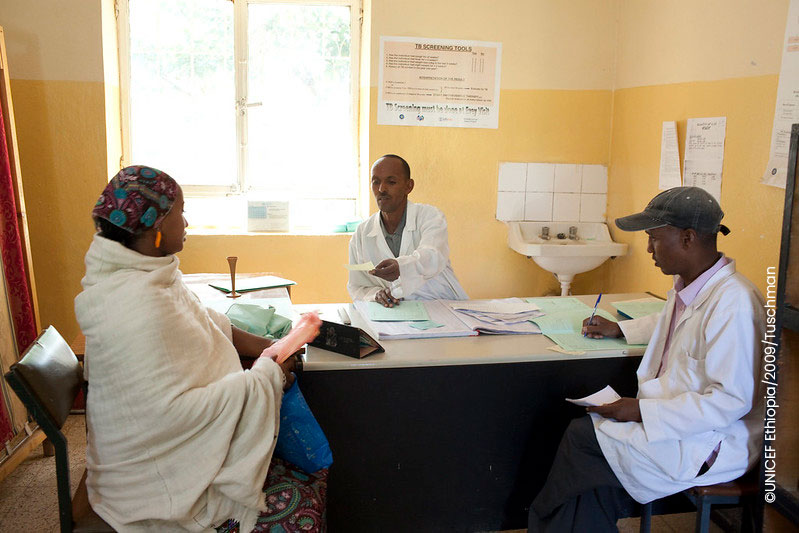In 2019, 269 million children under five, 32 million pregnant women, and over half a billion women of reproductive age were reported to be affected by anaemia. The condition causes adverse health outcomes, delayed cognitive and physical development in children, and reduced productivity which may lead to economic losses. Despite global efforts, the reduction in its prevalence has slowed down in recent years, with the situation worsening because of the COVID-19 pandemic. To help understand and reverse this trend, 3ie and Nutrition International are mapping evidence of anaemia-reducing interventions and their effectiveness.
A complex puzzle
There is no one-size-fits-all solution for this multifaceted problem. The decline in progress is likely caused, at least in part, by the complex etiology of anaemia. Iron deficiency has long been synonymous with anaemia. However, contemporary science also ties other nutrition deficiencies, malaria and other infections, inflammation, gynaecological and obstetric conditions, and inherited red blood cell disorders to anaemia. These determinants are caused by intermediate risk factors such as inadequate maternal and child care; family planning; food security; access and use of health and nutrition services; health and nutrition knowledge. These immediate determinants are, in turn, caused by underlying risk factors such as low education, poverty, cultural norms, and health policies.
Because of these complex drivers, the World Health Organization (WHO) advocates for multi-sectoral strategies that address the diverse underlying, intermediate, and direct causes of anaemia. In addition to addressing health systems needs, this will require multi-stakeholder efforts to tackle nutritional and non-nutritional causes of anaemia within environmental and social domains.
Need to map the evidence (and gaps)
The proposed multi-sectoral solutions to the complex problem of anaemia require governments and donors to prioritise the use of limited resources. To do this, they need rigorous evidence of effectiveness. Interventions tackling the direct causes of anaemia are better researched. However, rigorous evaluation-based evidence on interventions addressing underlying and intermediate risk factors for anaemia is relatively uncommon, as are evaluations of multi-component and cross-sectoral interventions. There is also a gap in evidence regarding how to effectively help specific vulnerable groups.
Our evidence gap map (EGM) aims to identify and thematically map ongoing and existing impact evaluations and systematic reviews of the effects of interventions addressing the direct, intermediate, and underlying risk factors for anaemia. We will only include rigorous experimental or quasi-experimental quantitative impact evaluations or systematic reviews of effectiveness. Pre-analysis plans and ongoing evaluations will also be included.
Help us with our literature search
We have completed a search for literature in several relevant academic databases. We have also searched for grey literature on the websites of relevant organizations and knowledge repositories. We will complement these by screening the studies cited in the included papers, and the papers that have cited any included studies. We believe this comprehensive approach will minimize the risk of missing out on relevant evidence.
The EGM protocol provides details on the scope of the map, the criteria for study inclusion and the types of interventions and outcomes we are covering. Briefly, the EGM will include interventions that address:
- Chronic diseases, infections, gynaecological and obstetric conditions and inadequate nutrient intake, absorption, and utilization
- Cultural and behavioural norms, poverty, food insecurity, lack of access to/use of health and nutritional services, lack of knowledge and awareness and lack of access to WASH services
- Macro-level health policies, low educational attainment
If you are aware of any study that could be pertinent to this EGM or if you have any thoughts or views to contribute on the subject, we encourage you to share your comments below or reach out to Ashiqun Nabi at anabi@3ieimpact.org.
We are accepting study suggestions till 15 October 2023.













Helping vulnerable groups, lived experience: Government staff should be well trained on how explain the basics of anemia to locals. As much as folic acid tablets can be readily available to the public, there is less information sharing about why patients are given these pills. As a chronic anemic person, I have found myself explaining to my mother why she should keep taking her iron supplements to avoid many future blood transfusions. Those make her angry too because she doesn’t want a strangers blood in her system.
I recently advised a friend to get their mother iron supplements at clicks because I have learnt R40 is all I need to boost my red cell blood count yet no one tells you this at government facilities. Iron rich foods like spinach can easily be planted as small household food gardens to supplement in cases where patients live below the poverty lines.
The problem with treating anemia in vulnerable groups is medical jargon, information must be translated into local language and basic logic. That nurse in a rural health facility must know how to pass such valuable information to a large group in a shortest amount to of time using local language and giving examples that translate to real community issues.
For a long time I was regarded as a frail child who grew up to a lazy sleeping adult. I learnt at 25 during pregnancy I have iron deficiency and it was partly the reason for all the light headed dizziness in my teenage years.
Imagine an anemic young woman who has had 3 children and all the blood loss. To top it off, our bodies cry out for help and the only explanation we have is “I am craving soil” and that creates constipation and gallbladder problems.